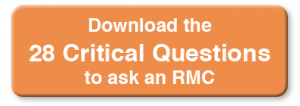Here are some key points to bring up when seeking relocation management services
In a competitive hiring market, companies see firsthand how hard it can be to not only obtain but retain top candidates in their industry. Human resources teams in numerous industries are offering great hiring incentive programs in hopes of landing the most qualified applicant to fill the vacant spot. One of the best incentives to offer is a relocation package.
When hiring for a position, a qualified local candidate might fill that hole just fine. But what if there are no local applicants who qualify? Only fielding applications from locally based people can pigeonhole the hiring process for each position. But if the hiring manager can negotiate with employees globally then it opens up the options for getting the right talent in the right seat.
The best route to take when offering relocation services is to work with a qualified and highly reputable relocation management company (RMC). Many companies understand that working with an RMC will provide their employees and families with a seamless relocation process.
Hence, they seek pricing and bids from multiple RMCs to assure they are getting the best price. However, determining how to choose a qualified RMC can be challenging for a company that does not have a complete understanding of the talent mobility process. Therefore, these questions will help identify those with the most experience and best relocation management services.
1. Overview of the Company/General Company Information
RMCs should provide information about their principals, organizational structure, and account managers. A history of the company will give insight into its growth and industry relationships. Third parties and business partners used as vendors should be fully noted. But the important note to walk away from here is to find out who and how many points of contact the relocating employee will have during the process.
Relocating a family is not an easy process. The last thing a moving employee wants is to not know who to reach out to at all times. Verify with the RMCs that each transferee will have a go-to account manager or relocation expert they can contact directly at all times.
2. Relocation Services and Supplies
There is no one size fits all relocation package. Every company will have different needs depending on how many employees they relocate, the timelines they have to relocate them, and the number of talent transfers they perform each year. That’s why companies who are vetting RMCs should find out about the relocation services offered and if those services can be tailored to their needs.
Consider this question as a detailed menu of what the RMC will provide. Look for information related to specific areas, including:
- Policy Counseling
- Expense Administration
- Cost Projections
- Household Goods Moving Services
- Temporary Housing
- Home Marketing Assistance
- Guaranteed Buyout/Amended Value Sale Program – Home Sale Assistance
- Buyer Value Option Program – Home Sale Assistance
- Home Inventory Management
- Home Finding/Purchase Assistance
- Mortgage Assistance
- Rental Assistance
- Property Management
- Spouse/Partner Assistance
3. Quality Assurance/Customer Service
Good information in this section includes customer retention rates, complaint resolution processes, methods of communication, and all reporting and tracking systems available to the company and its relocating employees. In addition, the RMC should note how they account for order delivery, planning, and revisions to shipments.
Website services and information technology solutions as they apply to customer service should be described in detail. Look for a company that provides a robust solution that can easily integrate into your company’s current systems. True innovators should speak to their experience and history within the relocation industry.
4. Transition Process and Projected Relocation Timeline
In this section, the RMC should describe the transition from the pre-decision services to the final destination, including the setup of technology and rollout of the talent mobility program. The staffing structure for account services, including one-on-one services, should be described. The company should outline their support staff process, regular hours of operation, response times, and hierarchy to escalate issues.
5. What Sets Them Apart From Competitors?
The RMC should call out their main advantages that companies and employees will achieve by selecting their firm to provide relocation services. Several distinct advantages should be described in detail, and the RMC’s value proposition on each point should be clearly defined. At least three references who can speak to their experiences working with the RMC should be supplied as well.
GMS Checks All These Boxes
At Global Mobility Solutions (GMS), not only do we provide unbeatable relocation management services but we are the innovators of the talent mobility industry. For example, in the early 1990s, GMS was the first relocation company to register as a .com, created the first online interactive tools and calculators, and revolutionized the entire relocation industry.
GMS continues to set the industry pace as the pioneer in innovation and technology solutions with its proprietary MyRelocation™ technology platform. Therefore, this allows GMS to provide clients with an ideal platform with fully integrated information technology solutions for their relocation programs.
At GMS, we take pride in providing award-wining relocation services to companies across numerous industries. We would love to have one of our expert team members walk you through your current relocation policies. From there, we can then decide the best route to take to help get your employees from point A to point B. With over 30 years of experience in the relocation and real estate industry, our team of relocation coaches strive to make the moving process as seamless as possible.
We're Here to Help! Request a Courtesy Consultation
Are you ready to talk to a Mobility Pro? Learn how GMS can optimize your mobility program, enhance your policies to meet today’s unique challenges, receive an in-depth industry benchmark, or simply ask us a question. Your Mobility Pro will be in touch within 1 business day for a no-pressure, courtesy consultation.













